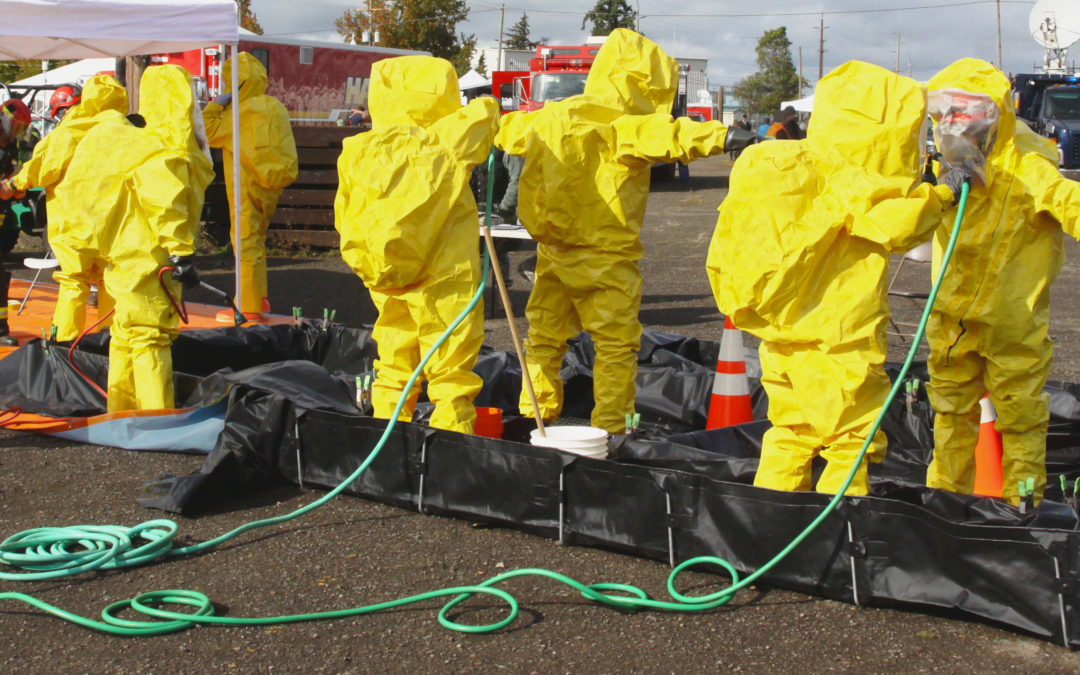It’s 10:38 on an average Tuesday morning. You’re just settling into your second cup of coffee when you hear a sound that makes your blood run cold: the siren that signals a hazardous materials release in the laboratory.
As you rush through crowds of evacuating employees, you have just two thoughts pounding in your head:
1. The lab people had only seconds to contain the problem or it’s going to be a disaster.
…and…
2. Was their training good enough to help them contain it?
Was their training good enough? The big problem with most learning solutions is that they fail to take into account the concept of performance urgency: how fast and how critical it is that people apply what they know. As a result, both critical and nice-to-know information get mixed together in the same classroom session, e-learning course or video.
Mixing urgencies not only creates a lot of Training Waste, it also dilutes learning, which can cause people to fail to respond correctly in a crisis.
The Three Levels Of Performance Urgency
In Lean for Training, we divide Performance Urgency into three levels, each with its own learning solutions.
Level 1 – Holy Cow!
This is the most critical level of performance urgency. You need people to act immediately and correctly. Their responses need to be almost instinctive with as much “muscle memory” as possible.
Obvious examples include accidents, in-flight emergencies, coding patients and fires. But Holy Cows can also be situations that are simply do-or-die for the bottom line, such as when the company’s largest investor asks a critical question at the stockholder’s meeting or when a vice president is handling questions at a press conference during a crisis.
You may have heard me say “Training is for dogs. People learn.” But there are times when you want people to respond like they’ve been trained. These Holy Cow situations call for immersive and repetitive training solutions such as:
- Role playing
- Simulations
- Hands-on practice
- Drills
- Mentoring
Your goal is to make people respond immediately and correctly. Do not try to solve Holy Cow situations with manuals, Powerpoint™ lectures, or elearning.
Level 2 – Can I Put You on Hold?
This level of performance urgency is important – the learner has to get it right – but fluency is not quite so urgent. The employee has minutes (but not hours) to get the answer they need. It also may be a situation that is important, but rarely encountered, so that the knowledge is lost of forgotten from lack of use. There is a need, and the opportunity, for just-in-time learning.
Can I Put You on Hold situations include what to do after the emergency is contained and everyone is safe. Or, getting a non-critical question during a presentation. Or, in a call center, putting a customer on hold while the operator looks up information.
Job aids are great learning solutions for Can I Put You on Hold situations, because you can transfer the knowledge at the moment of need. Examples include:
- Checklists and flow charts (for what to do after an emergency is contained).
- A pre-made set of slides (to guide a presenter through a particular question).
- A set of talking points (for new products during a sales meeting).
- Knowledge bases of answers to frequently asked questions.
- Mentoring, when the employee asks a coworker for information.
Level 3 – Oh, That’s Interesting
These are situations that are important but not time-critical. They involve content that’s good to know but that can be learned on the employee’s own schedule.
Examples include a lab technician learning how to calibrate equipment, a sales rep reading up on marketplace reports, or a nurse expanding her knowledge about certain classes of drugs.
Effective Oh That’s Interesting learning solutions are:
- E-learning courses
- Manuals
- Reports
- Videos
- Podcasts
- Webinars
- Mentoring
However, even these learning solutions should be designed with the best learning techniques in mind: short, focused bursts of learning and as interactive as possible.
The Lean For Training Bottom Line
Before creating any learning solution, always assess the level of performance urgency for the content and make sure you’re choosing the correct solution.
More in-depth learning about Performance Urgency is available as part of our Lean for Training and Lean for Safety Training certifications. If you want to master these and other advanced Lean techniques, our certification programs provide more learning and coaching as you complete real-world projects.
~ Todd Hudson, Head Maverick

